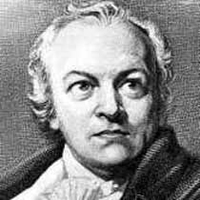The Lamb by William Blake: Summary and Critical Analysis
The lamb is one of the simplest poems of Blake. The symbolic meaning of it is almost clearly stated in the poem The Lamb which is probably the most important among the poem of innocence. Here the symbols of child, lamb and Christ are assimilated each other. The poem begins with a child like directness and natural world that show none of the signs of grownups.

William Blake (1757-1827)
The poet addresses lamb itself. Lamb is pure, innocent and it is associated with Christ. Being a visionary Blake invites the reader to world free form reasoning. He describes the lamb as he sees it. The lamb has been blessed with life and with capacity to drink from the stream and feed from the meadow. It has been allotted with bright, soft and warm wool which serves as its clothing.
It has a tender voice which fills the valley with joy. The child, too, is an innocent child. Christ was also a child when he first appeared on this earth as the son of God. The child enjoys the company of the lamb who is analogous to the child. The poem displays the innocence the joy and affection. The lyric is counterparts to the tiger. “The Lamb” and “The Tyger” represent the two contrary states of the human soul. The lamb represents innocence and humanity whereas the tiger represents a fierce force within man.
The child asks who made the little lamb in a typical child’s tone, rhythm and diction. The lamb, he says, has been given the “clothing of delight”, soft and ‘wooly’ clothing, and such a tender voice that makes all the values rejoice. Besides, God has given the lamb the feet and told it to go and feed itself by the stream and over the meadow. But in the next stanza, the speaker himself tells the little lamb that his maker is known by the very name of the lamb. He is also gentle and mild. “I a child and thou a lamb, we are called by His (Christ’s) name”. We have here a realistic and sympathetic portrait of a lamb. But, the symbolic meaning goes much deeper. The poem seems that it is based on the biblical hope that "meek shall inherit the world”.
In the second stanza there’s an identification of the lamb, Christ, and the child. Christ has another name, that is, lamb, because Christ is meek and mild like lamb. Christ was also a child when he first appeared on this earth as the son of God. The child shows his deep joy in the company of the lamb who is just like him, meek and mild. Even on its surface level the poem conveys the very spirit of childhood the purity, the innocence, the tenderness, as well as the affection that a child feels for little creatures like the lamb. There are also overtones of Christian symbolism suggested by Christ as a child. The pastoral setting is also another symbol of innocence and joy.
The lamb has got not ordinary clothes but clothes of “delight”; this is the first indication of the symbolic meaning in this poem. The lamb itself is a symbol: it stands for the innocent state of the soul, a dweller of the world of innocence and an emblem of purity, naturalness, and spiritual, original and natural being. The word ‘wooly’ also reminds of Christ was being born with a soft wooly hair. The brightness may also be an indication of the halo or shining on the pure being. The voice could also be the word of Christ or that or the visionary and creative being, the poet and the prophet.
The Lamb is the most representative poem of the poems of ‘innocence’. It tells almost everything it needs to for making us understand its symbolic theme. The child is a symbol of innocence, the state of the soul which has not yet been corrupted by the world of conventionalized pretensions called religion, culture, society and state and other codified systems. This overtly simple poem also subtly approaches the subject of creativity and the creator. While the speaker is speaking about a real physical lamb on the surface of it, the subtext of the poem derives from both Christian and classical mythology. The child is the symbol of Christ, the physical incarnation of the deity. The fact that it has been sent to feed among the meadow and along the stream indicates that it is to live by natural, instinctual means, or the Divine law of the nature. The wooly softness and the brightness that comes from within also support the divine nature of the lamb symbol. The voice of the lamb is also equally significant. The child, the lamb and the Christ are all close to the creative being; creativity is a child like occupation, since it also involves the natural spirit, sense of wonder and undefiled imagination.
Cite this Page!
Sharma, K.N. "The Lamb by William Blake: Summary and Critical Analysis." BachelorandMaster, 24 Nov. 2013, bachelorandmaster.com/britishandamericanpoetry/the-lamb.html.
Related Topics
The Tyger from Songs of Experience
England! Awake! Awake! Awake! from Jerusalem
 |
bachelorandmaster.com |